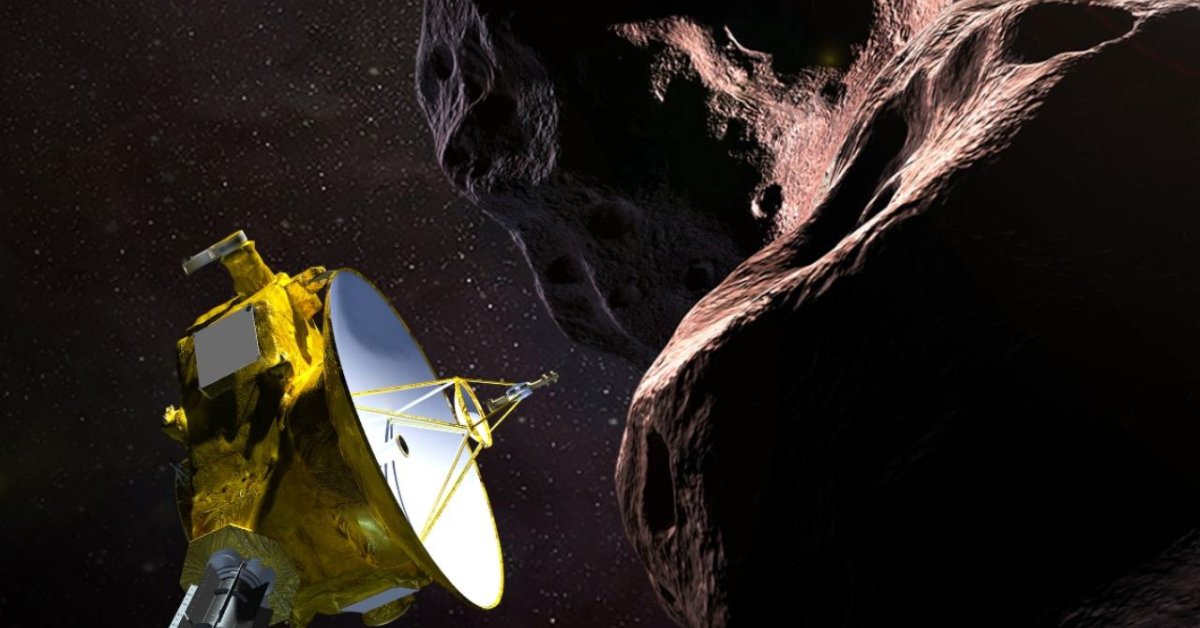NASA New Horizons Spacecraft Successfully Flew By Ultima Thule
Aadhya Khatri - Jan 03, 2019

NASA's New Horizons spacecraft has made history by successfully flying by Ultima Thule, setting the record as the longest distant space flyby in history.
- Russia Will Build A Lunar Space Station With China Because It's Done With NASA
- NASA Reveals 20 Most Stunning Earth Images Taken From The ISS
- Indian-Origin NASA Researcher Discovers Jupiter Moon Europa Glows In The Dark
On the very first day of 2019, New Horizons probe successfully performed the longest distant space flyby in history. The spacecraft also snapped thousands of pictures of a space rock called Ultima Thule as it barrelled past the object on the solar system’s outer edge, making it the first spacecraft to approach this ancient icy space rock.
The Ultima Thule is in the Kuiper belt and located 4 billion miles from planet Earth. The belt is made up of the leftovers of the solar system’s formation around 4.6 billion years ago.
While the general mass celebrated the year 2019, scientists at the Johns Hopkins University Applied Physics Laboratory were waiting eagerly for the probe to fly past the target. At 12:33 a.m EST Tuesday, the New Horizons got closest to the Ultima Thule at the distance of 2.200 miles.
New Horizons was too far away from Earth that the scientists in charge of the mission could do nothing if anything unexpected happened to the probe. The spacecraft had to count on its onboard software to solve any problem arose during its mission.
When the confirmation signals were received, the whole mission’s control center broke into applause. The spacecraft had set a new record and took us to a whole new world at the speed of 9 miles/second, or 32.000 miles/hour.

Launched in 2006, New Horizons' voyage record has been filled with first times. This encounter with the Ultima Thule is just another achievement it made on the journey exploring our own solar system.
According to Alan Stern, who shared his thought on the value of achieving a new distance a few hours before the historic flyby, this new and unaltered world could give us valuable insights into where the solar system originated and how it evolved.
Brian May, the guitarist of Queen dedicated a new song for this achievement. He said that the endeavor was more than a space mission. It represented the adventurous spirit which is innate to human.
In a tweeted statement, Jim Bridenstine, the chief administrator of NASA paid tribute to this new endeavor of the New Horizons. It was not only the first probe to carry out exploration to Pluto, but it also got to a new distance and examined a space rock that bears evident from the birth of the solar system.
The spacecraft was out of contact to its control center for 10hh hours before it phoned home to confirm that the mission was accomplished. NASA will organize two conferences at 2 p.m on the second and third of January to publicize its findings.
The great distance between the probe and Earth is 4 billion miles so transmitting data takes about 6 hours to complete. So scientists must wait for 20 months for all the data to be sent back.
Stern said that they had already learned a lot about Ultima Thule from the initial images, from then on, what we had would get better every day.
The image below gives us an idea of what the Ultima looks like and some of its behavior.

According to Stern, the rock has the shape of a bowling spin, but he also suggested that the Ultima might consist of two objects that have tight orbits.
There is a theory about the peanut-like appearance of this space rock. Some people believe that in the early life of the solar system, dust and ice swirled into two separate objects, which have their own gravity. This force is what keeps the two in contact until today.
While the approach of New Horizons with Ultima Thule has taken most of the public attention, there was another noted NASA’s spacecraft that performed a gravitational dance with an asteroid called Bennu.
The probe in question is the Osiris-Rex, whose mission is to “pickpocket” the asteroid for some samples. At 2:43 p.m. EST, New Year Eve, the spacecraft placed itself in orbit, meaning it will revolve around the Bennu with a distance of 1 mile. There has never been any probe to get this close to an asteroid before.
However, there are still challenges await as the Bennu is so small that maintaining a safe distance with it is already a difficult task. From then on, Osiris-Rex will focus on its primary target, which is collecting dust from the asteroid surface.
Featured Stories

Features - Jul 01, 2025
What Are The Fastest Passenger Vehicles Ever Created?

Features - Jun 25, 2025
Japan Hydrogen Breakthrough: Scientists Crack the Clean Energy Code with...

ICT News - Jun 25, 2025
AI Intimidation Tactics: CEOs Turn Flawed Technology Into Employee Fear Machine

Review - Jun 25, 2025
Windows 11 Problems: Is Microsoft's "Best" OS Actually Getting Worse?

Features - Jun 22, 2025
Telegram Founder Pavel Durov Plans to Split $14 Billion Fortune Among 106 Children

ICT News - Jun 22, 2025
Neuralink Telepathy Chip Enables Quadriplegic Rob Greiner to Control Games with...

Features - Jun 21, 2025
This Over $100 Bottle Has Nothing But Fresh Air Inside

Features - Jun 18, 2025
Best Mobile VPN Apps for Gaming 2025: Complete Guide

Features - Jun 18, 2025
A Math Formula Tells Us How Long Everything Will Live

Features - Jun 16, 2025
Comments
Sort by Newest | Popular